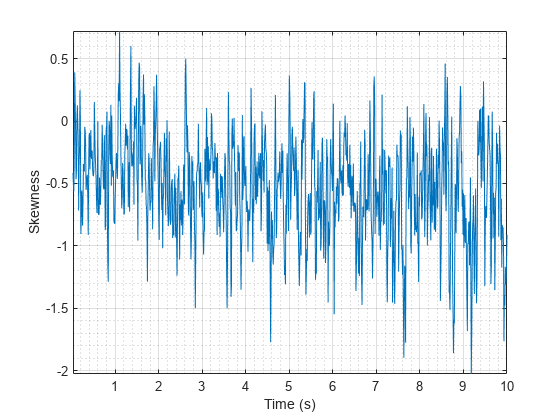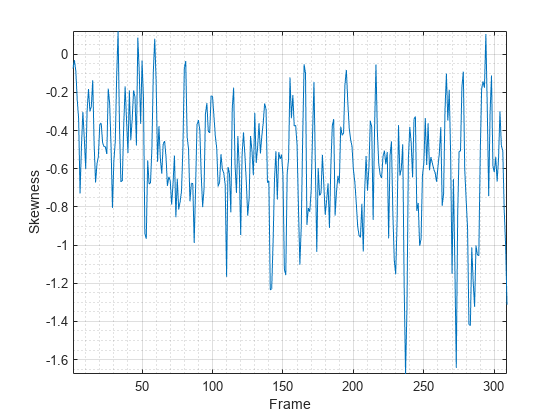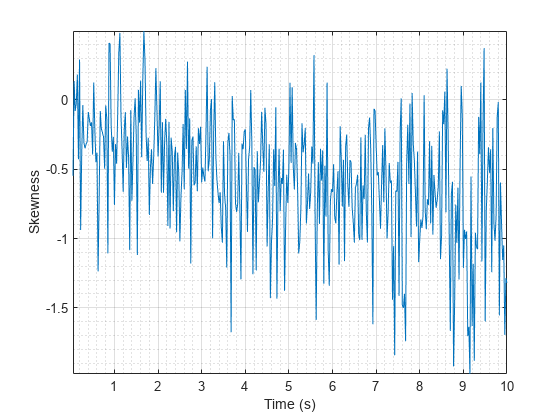spectralSkewness
Spectral skewness for signals and spectrograms
Syntax
Description
skewness = spectralSkewness(x,f,Name=Value)
spectralSkewness(___) with no output arguments plots
the spectral skewness.
If the input is in the time domain, the spectral skewness is plotted against time.
If the input is in the frequency domain, the spectral skewness is plotted against frame number.
Examples
Input Arguments
Name-Value Arguments
Output Arguments
Algorithms
The spectral skewness is calculated as described in [1]:
where
fk is the frequency in Hz corresponding to bin k.
sk is the spectral value at bin k.
b1 and b2 are the band edges, in bins, over which to calculate the spectral skewness.
μ1 is the spectral centroid, calculated as described by the
spectralCentroid(Audio Toolbox) function.μ2 is the spectral spread, calculated as described by the
spectralSpread(Audio Toolbox) function.
References
[1] Peeters, G. "A Large Set of Audio Features for Sound Description (Similarity and Classification) in the CUIDADO Project." Technical Report; IRCAM: Paris, France, 2004.
Extended Capabilities
Version History
Introduced in R2019a
See Also
spectralCentroid (Audio Toolbox) | spectralSpread (Audio Toolbox) | spectralKurtosis
Topics
- Spectral Descriptors (Audio Toolbox)


